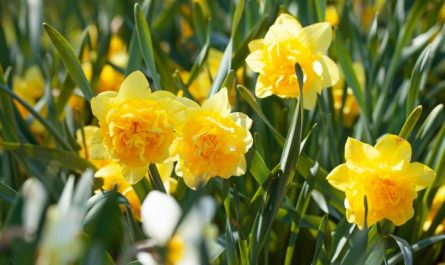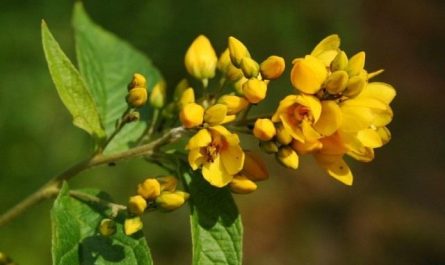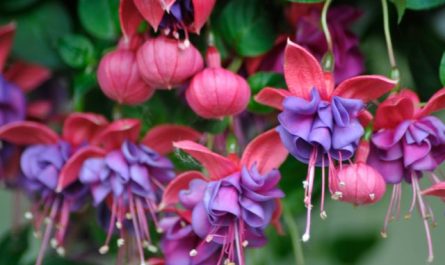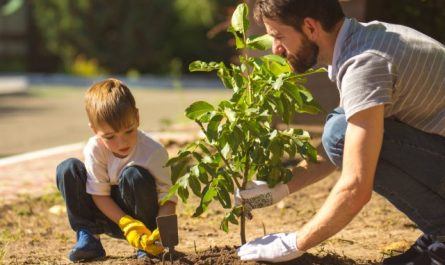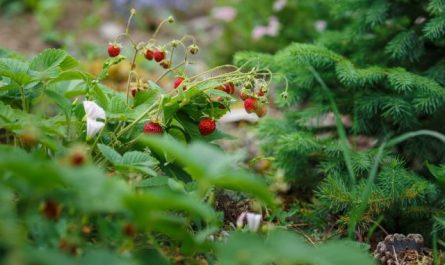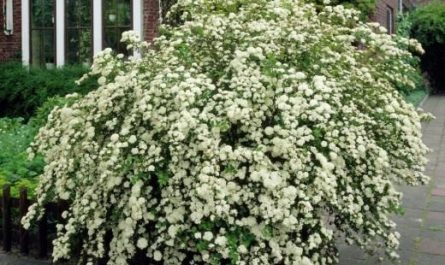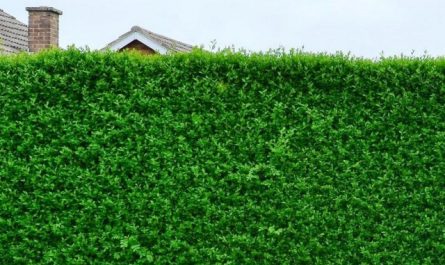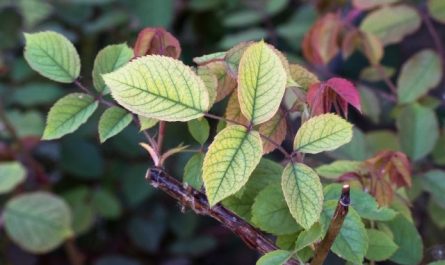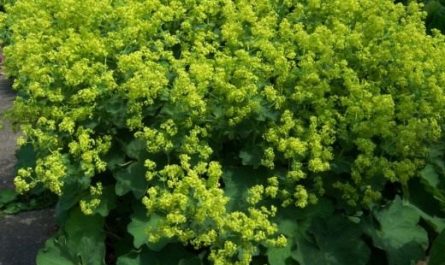In Europe and especially in England, hawthorn hedges are absolute favourites. The bush with its uniquely dense crown is truly perfect for creating green fences. But hawthorns have other advantages. Romantic and spectacular flowering and beautiful fruits will decorate any garden. And the endurance and unpretentiousness of hawthorns still have no equal.

Contents:
Hawthorn is a familiar plant that never goes out of fashion
Hawthorn is a large garden shrub that is considered quite common and typical in our country. But there is nothing wrong with the fact that hawthorns are familiar to everyone and have been used for centuries. After all, it is difficult to find a more reliable candidate for the role of garden decoration, as well as a better plant for creating background and dense plantings.
The scientific name of hawthorn is Crataegus, which directly reflects the hardness of its wood (from “krataios” – “strong”). Even the thorns of hawthorn are so strong that they can pierce almost any shoe, and in the old days they were used instead of nails. Thanks to the most noticeable, species-defining and unique part of this plant, in Europe hawthorn is simply called a thorn.
Representatives of the genus Crataegus are deciduous and semi-evergreen shrubs, less often trees with a dense crown. Despite the fact that hawthorns are often trimmed, giving them more compact silhouettes or walls, they remain neat and strict even without shaping. In nature, the maximum height of the bushes is not limited to 5-7 m, but in the garden, hawthorns are bushes of average 2-3 meters in height, with rare exceptions. Hawthorn can surprise with a neat and beautiful crown of a round or conical shape, naturally quite dense.
The shoots are purple-red, very beautiful, with varying degrees of thorniness. The graceful leaves of hawthorn can be either whole or lobed, they flaunt their dark green color in the summer, but they have prepared the main show for autumn, when the usual outfit is replaced by an orange-red fire.
The thorns of hawthorns are modified shoots, at the beginning of development they are small and have tiny leaves, after the loss of which the thorns change their green color and become increasingly stronger. In North American species, the thorns grow up to 5-9 cm, in rare cases – even up to 12 cm, in most European hawthorns they are absent or do not exceed 2-3 cm. The unusually sharp and large thorns of hawthorn not only complicate work with the plant, but also require special care when moving near bushes: any shoes are not an obstacle for hawthorn thorns.
The flowering period of hawthorns usually falls in May and June. White or pink flowers are collected in corymbose inflorescences. Despite the fact that the flowers are small, up to 3 cm in diameter, they sit in dense corymbs and the bush seems much more lushly colored.
Among hawthorns there are varieties with double flowers. All hawthorns without exception are characterized by beautiful stamens and anthers. Hawthorn blooms abundantly and very effectively, before the leaves bloom, but the aroma of the inflorescences is rather unpleasant and repulsive.
After flowering, hawthorns do not always produce not only beautiful but also edible fruits every year, which remain on the branches for more than 2 months. Large, round, pear-shaped or elongated berries of hawthorns are traditionally associated with an orange-red color, but in different species the berries can be purple, black, and yellow. The fruits contain up to 5 triangular hard seeds, and they are located on the top of the fruit. The size of the fruit varies from a few millimeters to almost 3 cm. Hawthorns bear fruit from the age of 8-10 years.

Types and varieties of hawthorn
In nature, hawthorns are very widely represented. The genus Crataegus includes more than a thousand species of shrubs found only in the northern hemisphere, within zones with a moderate and partially subtropical climate. Among hawthorns, there are both radically different plants and strikingly similar and difficult to distinguish species.
To facilitate recognition in landscape design, it is customary to distinguish between Eurasian and North American hawthorns. The former are characterized by deeply lobed leaves and small or absent thorns. North American hawthorns have whole or weakly lobed leaves. These are shrubs with very large and strong thorns. North American species are considered more decorative and promising today.
The most common type of hawthorn remains Common hawthorn, or hawthorn prickly (Crataegus laevigata). Resistant to wind and gas pollution, accessible and quite common, it is one of the most versatile garden shrubs. This hawthorn traditionally blooms in May-June. The leaves with 3-5 lobes are bright and glossy, the shoots are thorny. The common hawthorn is characterized by a neat oval crown. The flowers are not only white, but also bright pink, the bark of different varieties is layered differently.
Today, this hawthorn offers a choice between different varieties and interesting forms. For example, the variety “Paul Scarlett” with raspberry-pink double flowers is very popular. Even more common are decorative forms – white-pink Bicolor and red-flowered Pauli, a golden form with yellow fruits and oak-leaved with leaves decorated with round lobes.

hawthorn blood red, or hawthorn bloody (Blood thistle) is a spectacular hawthorn with very beautiful flowering. Its thorns are large, up to 4 cm, but they are located very rarely. The flowers are white, with purple anthers. The fruits are blood-red spherical berries, drooping on thin stalks. No less than the flowering and fruits, this bush is decorated with brown bark, and straight few thorns, and bright leaves flaunting shallow lobes.
Hawthorn softish, or semi-soft hawthorn (Crataegus submollis) – one of the best North American species. Orange fruits with very tasty pulp are a pleasant bonus for those who choose this species for growing in their garden. The plant has very thin thorns, densely shedding branches, the crown is almost perfectly round in silhouette, amazingly dense. The leaves are bright and whole, in the fall they change color to dazzling red.
One of the most popular types of hawthorn is hawthorn monogyna (Crataegus monogyna). This is a large classic species, 2 m high, with a very dense crown and easily tolerating strong shaping. The shoots are densely located. The bush blooms profusely in May and June. The flowers of this hawthorn are white-pinkish, pink anthers on the stamens give the plant an unusual charm. The fruits are light red, considered valuable medicinal raw materials. The single-pistil hawthorn has many decorative forms – pyramidal pink, white double, white-variegated, thornless, red double, continuously blooming, crimson, weeping, dissected, etc., as well as a number of hybrid varieties.



Hawthorn green-fleshed (Crataegus chlorosarca) can compete with the semi-soft in the density and thickness of the crown. This is a very beautiful plant with short thorns, snow-white flowers and almost black tasty fruits. Gray bark and purple shoots, ovoid leaves with shallow lobes and dense shields of inflorescences with dark anthers distinguish this plant from any other hawthorn. This is a highly decorative species with atypical gray-black colors, always attracting attention.
Hawthorn daurica (Crataegus dahurica) is a very decorative species with graceful small leaves and a compact crown size. Most often it develops as a low tree with grey bark, reddish shoots with small thorns and lanceolate-diamond-shaped, deeply lobed leaves, creating an elegant crown. White flowers with purple anthers look very delicate. Centimeter-long spherical fruits of bright red color appear already at the age of six.
Universal in its decorative qualities, suitable for both solo parts and hedges, original Crataegus pinnatifida (Crataegus pinnatifida). This is a spectacular spreading bush with dark gray bark, very rare thorns and small pinnately dissected leaves with bright colors. The fruits of the plant are decorated with warts, the bush itself looks unusually picturesque and elegant.

It has the largest thorns hawthorn large-thorned, or hawthorn large-anthered (Crataegus macracantha), which makes it an ideal candidate for creating impenetrable hedges. Spines up to 12 cm long and a very dense crown are combined with light bark, shallow-lobed dark leaves, which are famous for their yellow-red autumn attire and the ability to survive longer than other species. Bright large fruits glow against the background of foliage, they are somewhat dry and less tasty, but very impressive in appearance.
Today, it is also very popular Crataegus lavalieri (Crataegus x lavalleei), in particular, its most popular variety “Carrierei”, which in catalogs is even called a separate variety – Carrierei hawthorn. The white-pink May blossoms and bright orange-scarlet fruits look extremely impressive.
Among the controversial hybrids is one that is very popular with us. hawthorn mordensis (Crataegus x mordenensis) is a shrub with double flowers that change from bright pink to white, and has thornless shoots. This hybrid does not bear fruit, but is considered a beautifully flowering variety.

Of the very large species of hawthorn, the following are worth paying attention to:
- Crataegus Wattiana (Crataegus wattiana) – a luxurious shrub or tree up to 6-8 m high with few thorns, glaucous foliage and complex shields of white inflorescences, surprising with yellow balls of fruit;
- hawthorn fan-shaped (Hawthorn flabellata) – a species with upright shoots, large curved spines, ovoid, fan-shaped leaf blades with a serrated edge, snow-white flowers and bright red fruits;
- hawthorn douglasii (Crataegus douglasii) – a species with beautiful dark bark, without thorns, with irregularly lobed dark leaves, white inflorescence shields and purple-black fruits up to 1 cm in diameter, captivating with its shade tolerance;
- Hawthorn Maximovich (Crataegus maximowiczii) with grey-brown branches, without thorns, with ovoid leaves and large red fruits.
In the southern regions, it is worth paying attention to a species that is not winter-hardy enough for the middle zone and has original foliage – pear hawthorn (Crataegus phaenopyrum) – a species with original leaves similar to viburnum, straight five-centimeter thorns and red fruits, the diameter of which is slightly more than 0,5 cm.
Use of hawthorns in ornamental gardening
Hawthorns have earned a reputation as universal garden shrubs for good reason. They are suitable for landscaping both large and medium or small areas. Their bushes never look too bulky or, on the contrary, unsightly.
Hawthorns are used as:
- berry bush, a plant with bright, attractive fruits;
- deciduous shrub with a spectacular autumn crown,
- beautifully flowering plant.
Hawthorns are equally good as individual plants and in groups of various sizes and densities. Plants are grown as shrubs, in tree-like and standard forms.
Hawthorns are used in garden design:
- in impassable hedges of a landscape or strict type;
- in the undergrowth and forest edge;
- in the alleys,
- as a background shrub;
- in groups with evergreen and landscape species;
- for figured haircuts and placing accents and introducing strict soloists;
- in the background of large flower beds and borders;
- for wind protection, camouflage and creating screens.
Hawthorns attract honey-bearing insects to the garden, filling it with the cheerful buzzing of bees. And birds love this bush: they not only enjoy the fruits of the plant, but also happily use it to reliably cover their nests.
Hawthorn is a valuable berry bush. The fruits of the plant are edible in all species, but usually only large, tasty and fleshy fruits of just a few species are considered medicinal and nutritious. The berries not only decorate the garden, but are also used in cooking. They are collected as they ripen, from August, but the most delicious harvest can be obtained after the first frosts.

Conditions required for hawthorns
The reputation of an unpretentious shrub, which even novice gardeners can grow, has been proven by centuries of gardening practice in a variety of climate zones. Hawthorns surprise with their undemanding nature and resistance to adverse conditions and polluted environments.
It is important to provide hawthorns with sufficient lighting: shading has a negative effect on both flowering and fruiting of the plant. If hawthorn is grown not for its fruit, but mainly for its dense crown (especially if it is planted to create dense hedges), then the plants can be considered shade-tolerant.
For hawthorns, you need to select well-developed and loose soil. This shrub feels good in loams and sandy loams, is not afraid of the polluted environment of urban conditions, and tolerates gas pollution perfectly. Fertile fresh or moist soils are best suited for hawthorns, but in general the plant takes root in almost any conditions, with the exception of extreme ones. The soil reaction is preferably alkaline, hawthorn does not like acidic soils.
Planting hawthorn
Even in regions with harsh winters, hawthorns can be planted both in the spring, as soon as the soil warms up, and in the fall, at least a month and a half before the arrival of stable frosts. It is recommended to plant hawthorns in a permanent place at the age of two years, because older plants take root worse, and one-year-old seedlings need more careful care.
Hawthorns are planted at a distance of 1 to 2 m for decorative groups and 15 to 50 cm for hedges. Single growing bushes can be planted at a distance of 3 m from neighboring crops, but usually such a distance is left only when growing tree-like forms of hawthorns, which are used as tall solitaires in large gardens.
Planting holes should be prepared in advance. Large planting holes about 70 cm deep and wide are prepared for this shrub. It is better to replace the excavated soil with a special substrate, mixing humus and leaf soil with sand, peat and compost and increasing the alkaline reaction by adding lime. It is better to put a drainage layer of crushed stone or brick chips on the bottom of the planting holes. Before planting, the planting holes are saturated with water.
Pruning of seedlings is carried out only if the plants are used for a hedge. It is carried out in the same way for ordinary hawthorns and when tall or tree-like hawthorns are used, which over time lose their bushy shape and do not produce a large number of shoots. Such plants are planted “on a stump” to stimulate thickening of the crown: they are cut to a height of 10-15 cm, stimulating the growth of strong skeletal shoots.
Hawthorns are planted using the standard method. Plants are installed so that the root collar remains at the same level with the soil after the soil settles. Planting is completed with abundant watering and mulching of the soil.

Caring for hawthorns
The need for watering shrubs is directly determined by the type of plant. Moisture-loving species and varieties need to be watered regularly to ensure stable soil moisture. Watering for capricious plants is carried out rarely, but systematically. It is enough to water once a month with deep soil soaking, but twice as often water procedures in the summer. Drought-resistant hawthorns do not need watering. But several such procedures at the budding stage and after flowering will help the plants to give a more abundant harvest.
Hawthorns are content with minimal fertilizing. For these shrubs, one fertilizing in early spring is enough to provide the plant with all the necessary nutrients. For hawthorn, use complete mineral fertilizers in the amount of 100-120 g per square meter of planting. At the beginning of summer, the plant can be additionally fertilized with any organic fertilizers. If hawthorn is grown for the sake of the most abundant harvest, it is better to carry out three fertilizings – with complete mineral fertilizers in the spring, potassium-phosphorus – at the beginning of flowering and after the beginning of fruiting.
Hawthorns do not like compacted soils, so it is better to include regular soil loosening in the bush care program. It is usually combined with weeding, carrying out light loosening to a shallow depth (up to 10 cm) during the season. High-quality aeration or digging of the soil to the depth of a shovel is carried out along the perimeter of the trunk circle once a year – in early spring or autumn. Mulching will help simplify the care of the plant. It is not necessary to use special mulch for hawthorns: even simple soil or peat in a layer of 3-4 cm will do.
Despite the status of a resistant plant, hawthorns can suffer significantly from specific and fruit pests, powdery mildew and rust. Fruit sawflies, mites, scale insects, mealybugs, weevils and other pests of apple, maple and cherry trees are often found on hawthorns. Rust or powdery mildew, various types of spotting are controlled with highly specialized fungicides. It is better to carry out preventive treatments with insecticides against pests at the same time as fruit plants.
Pruning and shaping hawthorn
This shrub tolerates any shaping perfectly and is considered one of the “thickest” shrubs for any hedges – both landscape and strict. The ability to intensive shoot formation allows you to change the shape and control the size of hawthorns as you like.
There is only one mandatory pruning for hawthorns – sanitary cleaning. In the spring, damaged, dry, unproductive shoots are removed from the plant, as with any other bush.
The formation is carried out depending on the desired shape and contours: both to create a strict silhouette and for a hedge, you can cut the shoots to 1/3 of their length. In hedges, initial shaping is carried out: the next year after planting, the shoots stimulated by strong pruning are removed, leaving the two strongest. Later, the shoots are intertwined and trimmed to the desired shape.

Wintering of hawthorns
Most hawthorn species are winter-hardy plants that do not require winter protection. It is advisable to provide decorative varieties and forms of any hawthorn with a light cover for the winter, protecting the roots that are prone to protruding and located high. A high mulch layer of dry leaves up to 10 cm high is suitable as a protective layer. Species hawthorns, with the exception of low-winter-hardy southern species, do not need cover. The flower buds and shoots of the prickly hawthorn often freeze, but the plant recovers well.
Reproduction of hawthorns
Availability of planting material, low prices for hawthorn seedlings are largely explained by the ease of their propagation. The brighter the characteristics of the variety, the larger the flowers and berries it produces, the more expensive the cost of planting material. Self-propagation of hawthorn requires patience, because the plants bear fruit only after eight years of age, but it is not too complicated in its methods.
The easiest ways to get a new generation of hawthorns are vegetative. Hawthorns root well from cuttings. It is enough to hill the base of the bushes or fix individual branches in the soil and regularly water the plants to speed up rooting, and the following year you can plant independent plants.
Other methods are also used for reproduction.:
- separation of root suckers;
- rooting of root cuttings (a root about 2 cm thick is divided into fragments about 10 cm long and rooted like regular cuttings – deepening them 7-8 cm into the soil and maintaining high humidity with the help of a cover cap);
- grafting of varietal plants and ornamental forms onto rootstocks of hardy hawthorns (for example, common, prickly and single-pistil).
Growing from seeds is not difficult, but the process of growing plants is very long. You will have to wait up to 2 years for the plant to sprout, and the stratification period for different types of hawthorn varies from 6 to 12 months. Many seeds of the plant are empty, the percentage of germination is quite low, about 50%. Hawthorn is sown before winter, and for sowing, freshly collected seeds of unripe fruits are used, in which the shell around the seeds has not yet completely hardened. The fruits are soaked in water for several days, and then rubbed through a sieve and the seeds are washed from the remains of the pulp. The seeds are etched for hours in a solution of a growth stimulator or potassium nitrate of one percent concentration.
The seeds are sown before winter in large boxes or hotbeds. The plant seeds are sown very densely. The crops are covered with soil and a layer of dry leaves. In spring, hawthorn shoots are almost indistinguishable from apple shoots, they are very small. During the first year, the plants grow slowly, reaching a height of only 10 cm only with constant care. For further growing in beds, they are transplanted the following year. In addition to watering and other care, they begin to shape, cutting off all shoots that have reached a height of 50-60 cm to the level of the second or third bud from the bottom, in order to stimulate the growth of lateral branches. During the entire period of growing, the plants are monitored, shortening the main shoots and leaving only 2 lateral shoots, removing excess shoots and forming the base of the bush from strong branches.

